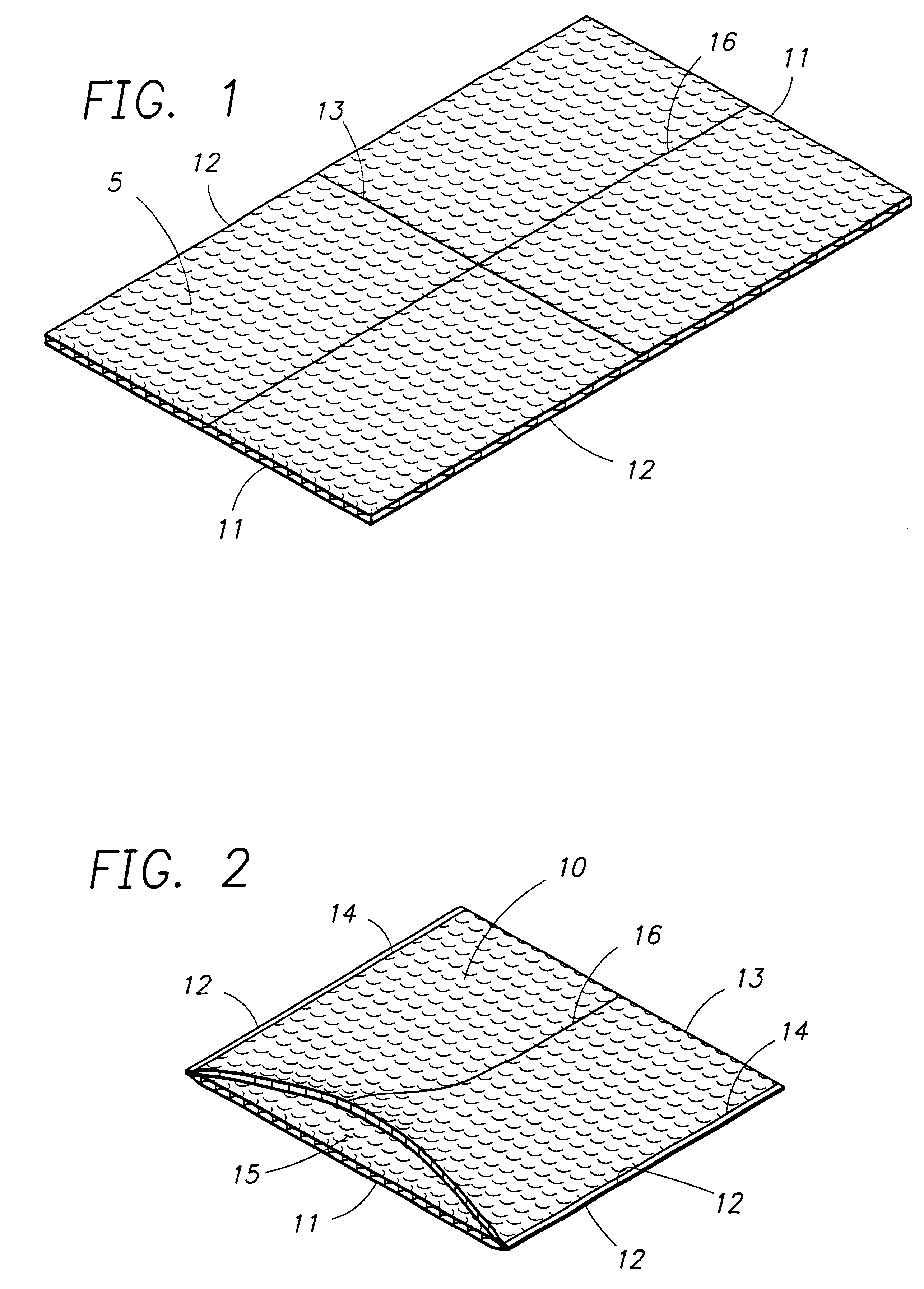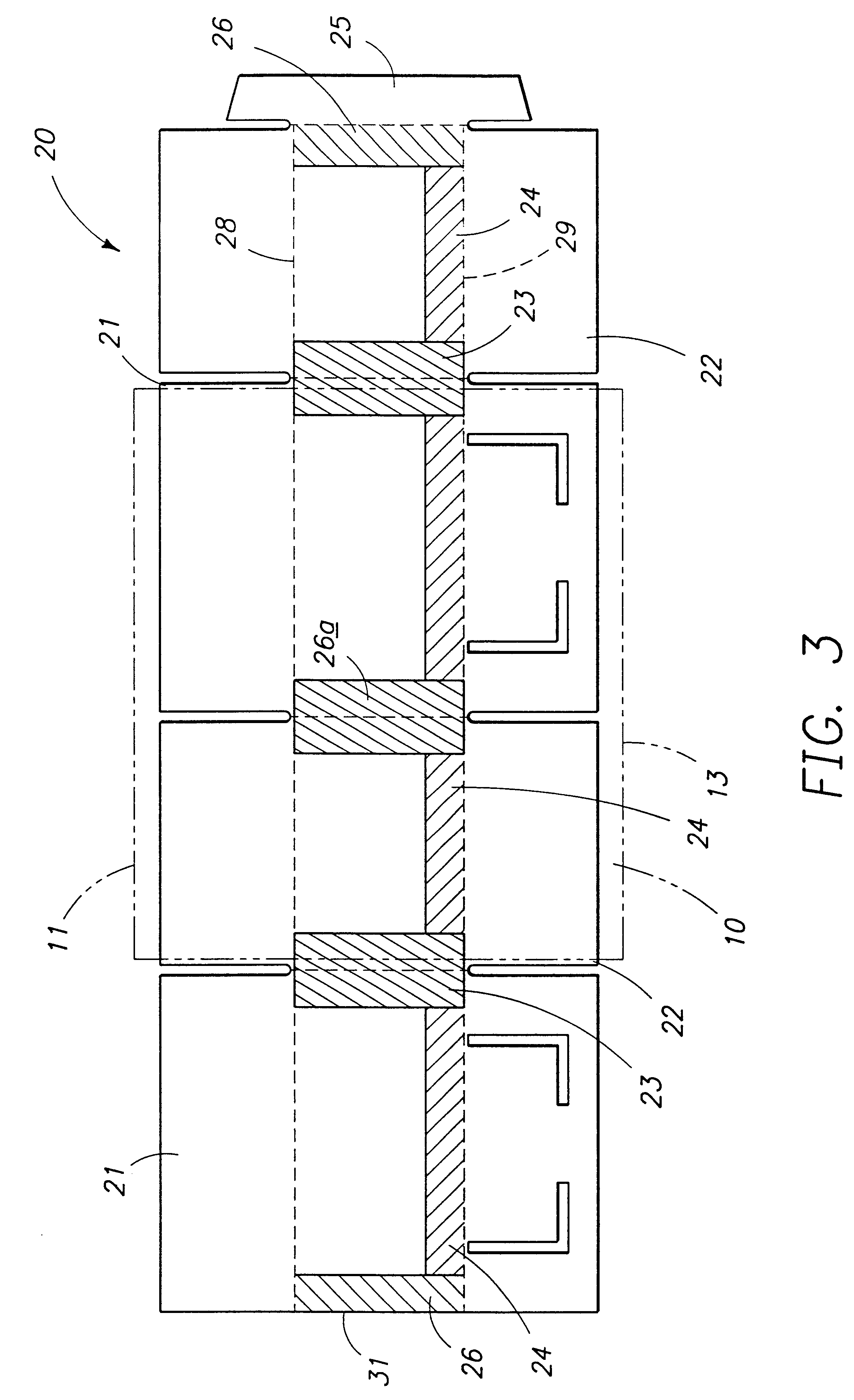Insulated water-tight container
a watertight container and container technology, applied in the field of insulated watertight containers, can solve the problems of high cost of assembling the container in this way, the container type requires substantial floor space and volume, and the polystyrene decomposes slowly, so as to reduce transportation and storage costs, the effect of preserving space and avoiding damag
- Summary
- Abstract
- Description
- Claims
- Application Information
AI Technical Summary
Benefits of technology
Problems solved by technology
Method used
Image
Examples
Embodiment Construction
Referring initially to FIG. 1, a flexible plastic layer 5 having at least one layer of air bubbles entrapped therein laminated to a layer of metalized polyester or foil (sometimes commonly known as "bubble wrap") is shown. The layer 5 has edges 11 at each end, edges 12 along each side, and a central fold line 13 approximately half way between edges 11 at each end of layer 5.
In FIG. 2, the flexible plastic layer 5 of FIG. 1 is shown folded along its central fold line 13, end edges 11 have been matched with each other, and side edges 12 have been matched with themselves. In such position, side edges 12 are sealed along their length, generally creating a seal line 14. Upon sealing, the layer 5 forms a pouch 10 with an opening 15, two sealed side edges 12, a fold of continuous material at the central fold line 13, and a pouch mid-line 16 on each exterior side of the pouch 10.
Referring now to FIG. 3, a single piece of rigid or semi-rigid outer container 20 is shown opened out prior to it...
PUM
 Login to View More
Login to View More Abstract
Description
Claims
Application Information
 Login to View More
Login to View More - R&D
- Intellectual Property
- Life Sciences
- Materials
- Tech Scout
- Unparalleled Data Quality
- Higher Quality Content
- 60% Fewer Hallucinations
Browse by: Latest US Patents, China's latest patents, Technical Efficacy Thesaurus, Application Domain, Technology Topic, Popular Technical Reports.
© 2025 PatSnap. All rights reserved.Legal|Privacy policy|Modern Slavery Act Transparency Statement|Sitemap|About US| Contact US: help@patsnap.com



